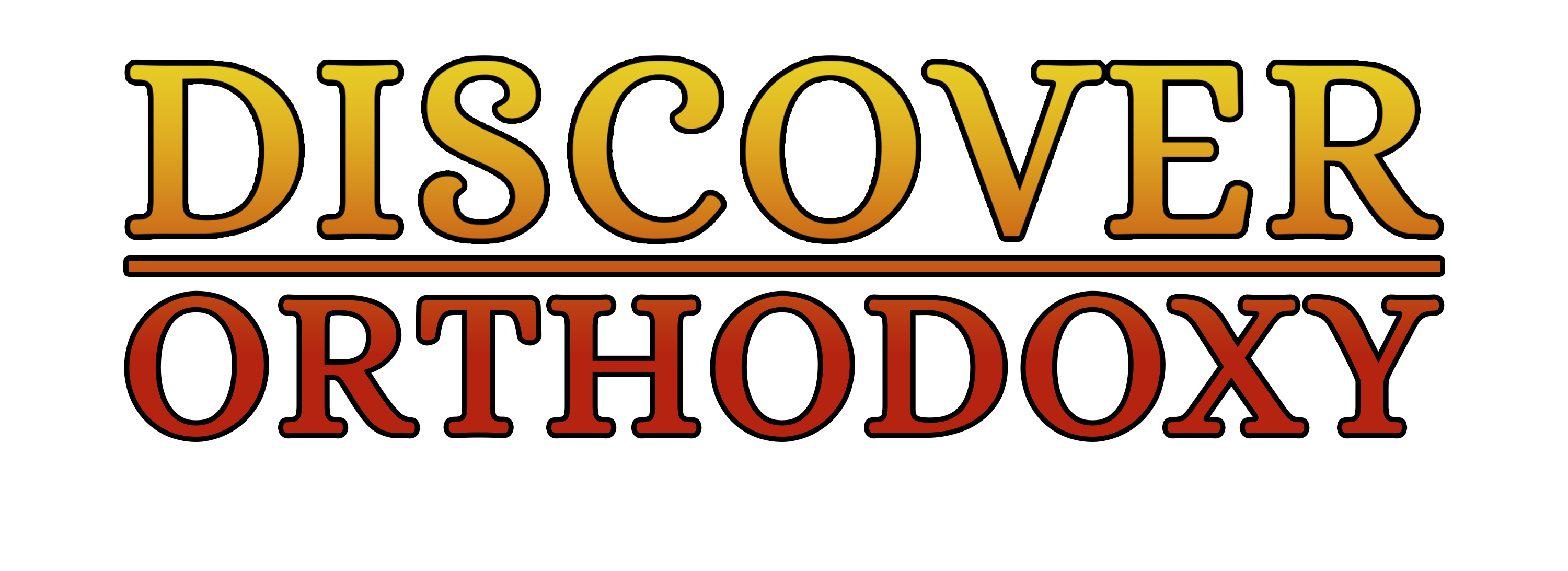
The Berrien County Clergy Association consists of Protestant ministers who meet from time to time. I haven’t been free to attend these meetings, but I like to stay connected. Last year during Western Holy Week, I was asked to address that passage in the Gospel of John where Mary Magdalene visits the tomb of Christ. Remember that Mary is the first to encounter the Resurrected Christ, but she doesn’t recognize Him. She takes Him for the gardener. Then Jesus asks her, “Whom do you seek?”.I was asked to focus on this question posed by Christ to Mary.
On examining the entire passage, I identified some important truths about how we seek and find Christ after the Resurrection. And it’s fitting that I now share the most important of these discoveries with you since, like Mary Magdalene, we are now in that time of the ecclesiastical year between the Feasts of Pascha and Holy Ascension.
Here is the script of my talk:
In the Name of the Father, and of the Son, and of the Holy Spirit.
In John 20:11-18, Jesus asks Mary, “Whom do you seek”? Of course, all Christians seek Christ. All of us probe the Holy Scriptures, and we all know that we must have faith if we ever hope to find Him. Reformed Protestants say, “Sola scriptura, sola fide”. But we Orthodox go deeper. We say that reflecting on the Scriptures, while key to our seeking, is a prelude to Holy Communion. It’s not just a matter of stress. For we Orthodox say that Christ is most fully present in the Eucharist, which we know to be His very Body and Blood. Indeed, it is our very life—as Jesus tells us:
Verily, verily, I say to you, except ye eat the flesh of the Son of man and drink his blood, ye have no life in you (John 6:53).
I’ll clarify this biblical and traditional understanding with reference to our Communion Prayer. But first, let’s look at John 20:11-18. Here is the King James translation of the Greek text:
Mary stood at the sepulchre weeping: and as she wept, she stooped down and looked into the sepulchre, and seeing two angels in white sitting, the one at the head, and the other at the feet, where the body of Jesus had lain. And they said to her, “Woman, why weepest thou?” She said to them, “Because they have taken away my Lord, and I know not where they have laid him.” And when she had thus said, she turned herself back, and saw Jesus standing, and knew not that it was Jesus. Jesus said to her, Woman, why weepest thou? whom seekest thou? She, supposing him to be the gardener, said to him, “Sir, if you have borne him hence, tell me where you have laid him, and I will take him away”. Jesus said to her, “Mary”. She turned herself, and said to him, “Rabboni”; which is to say, “Master”. Jesus said unto her, “Touch me not; for I am not yet ascended to my Father: but go to my brethren, and say unto them, I ascend unto my Father, and your Father; and to my God, and your God”. Mary Magdalene came and told the disciples that she had seen the Lord, and that he had spoken these things to her.
When Jesus tells Mary in the above well-known translation, “Touch Me not”, this is not precise. A more exacting translation would be “Do not cling to Me”. The word here is ἅπτω (afto). According to Strong’s Greek Concordance, the meaning of ἅπτω is “to lay hold of”—or to cling. So Jesus is telling Mary not to cling to him. He is not just telling her to stop touching Him. It’s about her tendency to cling, to take hold of Him—or to embrace Him, as we might embrace or hug a loved one.
But why is Jesus insisting that Mary no longer embrace Him? The Lord says it is because, “I have not yet ascended to my Father”. But what does this mean?
It means that Mary’s relationship with Christ has changed. But just as Mary’s relationship with the God-Man is changed—and as Mary is our sister—so it is that our relationship with the God-Man is changed. And the change comes about because Jesus is preparing to ascend to the Father
This is what Jesus is saying.
*
Following the Resurrection and the Ascension, how do we relate to Christ? We believe it is by cleaving to Him, by adhering or glueing ourselves to Him—by binding to Him. The word in Greek is προσκολλάω (proskollaó). It means to glue to, to adhere to, to cleave to, to join oneself to, and it is a word that is related to ἅπτω (afto). But clinging to someone or embracing is not the same as glueing, binding, and cleaving. Proskollao conveys a much stronger meaning than afto. Now we must cleave to Christ. We must glue ourselves to Him. We must bind ourselves to Him.
But the connotative sense of the word goes much deeper. According to Strong’s Greek Concordance, “proskolláō suggests a more permanent association, focusing upon reciprocal relations“. In other words, we relate by going back and forth: He offers Himself to us, and we offer ourselves to Him. It means to give and to take, to take and to give back. This is the meaning of a reciprocal relationship. In the sacrament of marriage, this word describes the close union between husband and wife who become “as one flesh” in Jesus Christ. And in our Divine Liturgy, our Eucharistic Assembly, it carries the same meaning, for this is what we do. We cleave to Him.
But does it say this in the Bible? And if so, where does it say this? I think there are many places, but I share with you one important place for Orthodox Christians—and that is within our Communion Prayer, which is of great antiquity. Here is a portion of that Prayer:
O Merciful Master, Lord Jesus Christ my God, let not these Holy Things be unto me for judgement through my unworthiness, but rather for the purification and sanctification of my soul and body, and as a pledge of the Life and Kingdom to come, for it is good for us to cleave to God (Προσκολλασθαι Τω Θεω [proskollasthai to Theo] and to place in the Lord my hope of salvation.
Cleaving to Christ, we have a more permanent, a much more intimate relationship with Him than Mary or the Apostles had before His Death, Resurrection, and Ascension into heaven. Now we glue ourselves to Him, as we who have been baptized into Christ receive His Body and Blood. Our relationship with Christ is no longer external. It is reciprocal. It is binding. Our relationship with Christ is now profoundly deep and intimate for now we see that He is in us.
This is to say that our relationship with Christ has become ontological, a word meaning that it concerns our deepest being, our very life! This means that in Christ, our humanity is fulfilled. It is realized. In other words, eating His Body and drinking His Blood, we are realized, made real—as He, being God, is the only real, the only fully human being who has ever walked on this earth.
Although it is no longer possible to cling to Him or to embrace Him, we cleave to Him by receiving His Body and Blood.
*
Now let’s come full circle. Jesus asks Mary, “Whom do you seek”? But in truth He is asking each of us, “Whom do you seek”? Living in a reciprocal relationship with Him, cleaving to Him, probing the Scriptures, worshipping and praising Him the ancient, Orthodox way, we who receive His Body and Blood—we who receive “in the fear of God, with faith and with love” (as the priest announces when offering the Eucharist to the faithful)—we ourselves as His Body are given to see. Now we know that He is in us!
And this is the meaning of our relationship with Christ after the Resurrection, the Ascension, and His Sitting at the Right Hand. It is about our coming to know that we dwell in Him, by the power of the Holy Spirit—to know that He is in us, as He is in the Father!
Amen!
Fr. Paul Martin
Annunciation & St. Paraskevi Greek Orthodox Church
New Buffalo, MI
